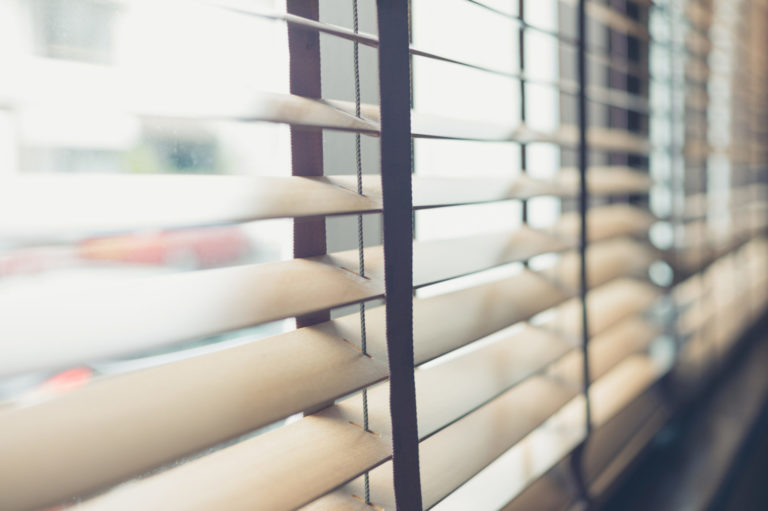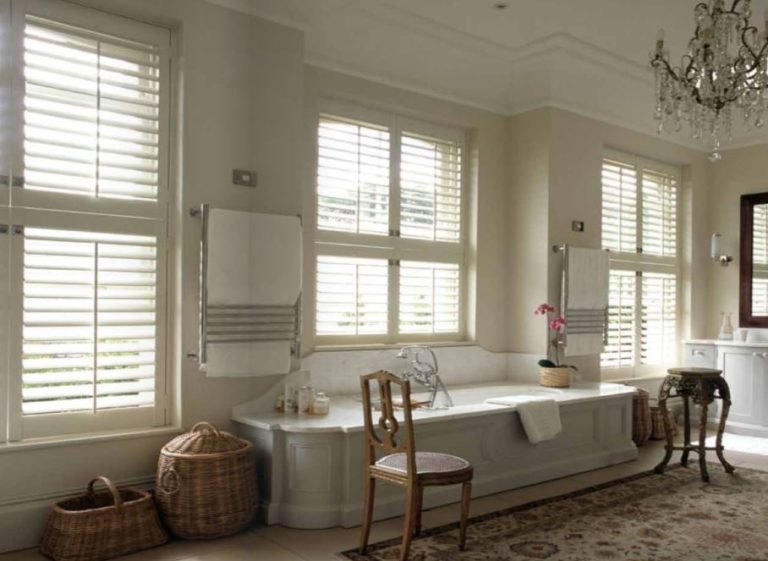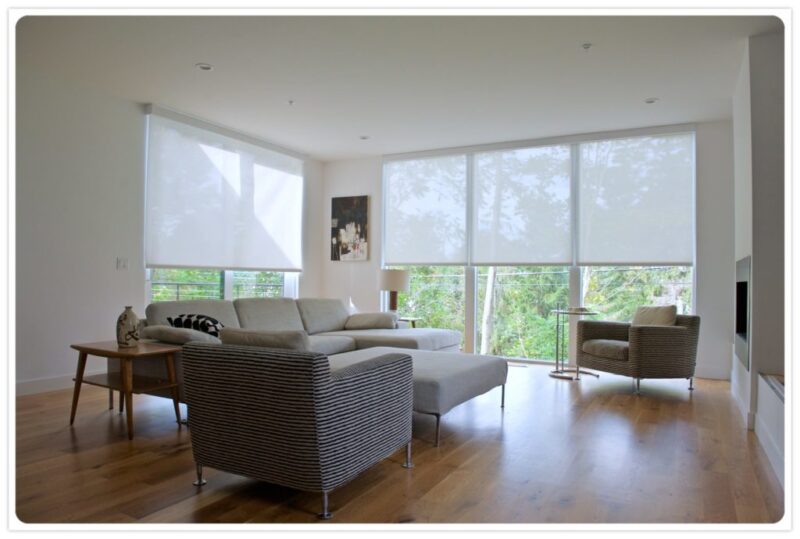Shopping for window treatments? You’ve probably heard the terms blinds, shutters, and shades used almost interchangeably. But while they all cover your windows, they’re definitely not all created equal.
As window treatment experts, we know that each style of window covering is very different from the other– and that each has its own pros and cons.
Let’s break them down:
Blinds

What most people picture when they hear “blinds” is actually a mini blind—those thin, horizontal slats (usually aluminum or vinyl) that tilt open and closed with a wand. They’re called “mini” because the slats are narrow, and they can also be raised and lowered for light control.
Mini blinds are popular because they’re inexpensive. But they come with a few downsides, especially compared to other window treatments:
- They’re not energy efficient: Research shows they can actually worsen your insulation. The gaps between slats create convection currents, making it harder to keep your room warm in winter or cool in summer.
- They’re not as stylish: While there are updated styles of blinds out there, they tend to fall short when compared to the sleek, modern look of shades.
- They don’t last long: The slats can bend or break easily.
Shutters

Shutters are a classic choice that many people love, especially in homes with a traditional style. And while shutters are lovely, they are designed to control the light with the louvers, rather than opening the panels themselves.
What this means is that if you have a view or a wide expanse of glass, you will always be looking through the shutter to enjoy your view. Additionally, because shutters are furniture for your window they come at a significant cost.
Shades

Shades are a solid piece of fabric or material that raises and lowers in one smooth motion. No slats, no gaps, no fuss. They come in a huge variety of styles— light-filtering, blackout, top-down/bottom-up, motorized, and more.
Here’s why we’re proud to offer premium handcrafted window shades, made at our facility in Vermont:
- They offer excellent insulation: Cellular shades in particular can block over 99% of UV rays and provide superior temperature control.
- They’re durable and long-lasting: Unlike mini blinds, they don’t get bent out of shape.
- They’re stylish: Clean lines and modern fabrics make shades a top pick for design-minded homeowners.
- When they are raised they leave a clean, open view and when they are lowered they are doing the hard work of insulation and light control.
So Which Style Is Best?
In our (admittedly biased) opinion, shades win over blinds and shutters every time. They’re better for energy efficiency, easier on the eyes, and built to last. While blinds and shutters might work in some situations, shades offer both function and form.
Ready to upgrade your window treatments? We’ll help you find the perfect shade for your space.
